8033 A SET OF FOUR NEO-CLASSICAL PAINTINGS BY TIARKO CRAMER [1780-1812], THE ALLEGORICAL DESIGNS CONCEIVED BY NICOLAI ABILDGAARD FOR THE RESIDENCE OF HARTVIG MARCUS FRISCH, NO. 5 NYTORV, COPENHAGEN Copenhagen. 1802. Measurements: Height: 73 1/2″ (187 cm) Width: 46″ (117 cm) Depth: 2 1/4″ (5.5 cm)

-
Figure 1
-
Figure 2
Research
Oil on canvas. One signed Copenhagen Juny, 1802; one signed Tiarko M. Cramer, 1802. The allegorical images represented by four length female figures, each in neo-classical dress and with varied attributes such as a theatrical mask, a statuette of fertility, a set square, and a fasces.
Marks:
The painting of Jurisprudence signed and dated:
Copenhagen Juny 1802
The painting with biblical allegory signed and dated:
Tiarkow M. Cramer fecit 1802
Provenance:
Almost certainly commissioned from Nicolai Abildgaard for the residence Nytorv 5 in Copenhagen.
The renowned Abildgaard scholar Patrick Kragelund, author of the monograph Abildgaard: Kunstneren Mellem Oprørerne,1 has identified the present set of four paintings by Tiarco Cramer (1780-1812), as likely to have been those that were to be placed in the framed reserves of a wall elevation by Abildgaard (figure 1) for No. 5 Nytorv, home to a wealthy Copenhagen merchant. His reasoning is as follows: Cramer was Abildgaard’s pupil; three of the four paintings were derived from a “satyrical triptych” by Abildgaard and, crucially, it is known that this triptych was hidden from view at the time Cramer painted his versions; as his pupil, Cramer would have had exclusive access to his mentor’s three works, and the present paintings correspond both with the timing of the Nytorv commission, as well as the exact size of the original spaces on the walls where the paintings were to be placed.2 Furthermore, there would, of course, have been no need for Cramer to have painted a fourth picture, were it not for the fact that Nytorv 5, as drawn by Abildgaard in his first elevation, demanded four canvases.
Abildgaard, born in Copenhagen in 1743, was the preeminent Danish history painter, designer, and architect of his day. Many of his works included allegorical and mythical subjects, often with political undertones. The commission for the present paintings was given by master and architect of Nytorv 5 to his apt and prized pupil, and the rediscovered paintings are accomplished representations of the allegorical genre.
The three paintings deriving from Abildgaard’s triptych, which for many years never left Abildgaard’s studio at Charlottenborg, depict the allegories of Jurisprudence, Theology and Philosophy (figure 2), and are today in the National Gallery of Denmark. Kragelund maintains that Abildgaard sympathized with the ideals of the French Revolution and the Enlightenment, and that the original triptych both reflected these sentiments and warned against the obscure forces of religion; they were most likely kept out of sight for these reasons. Later, Abildgaard would mention to a visitor to his studio that he would no longer paint allegories due to censorship.3
Kragelund uncovered a series of Abildgaard’s works, lost until recently, that replaced the present paintings at No. 5 Nytorv, home of Hartvig Marcus Frisch, director of the Royal Danish Greenland Company from 1781-1816. Also known as Frischs Gärd (Frisch’s Farm), Abildgaard served as the architect for this building and subsequently decorated the main floor in 1803. The subject for the uncovered wall paintings was Voltaire’s tragedy, “Le Triumvirat.” The patrons accepted this motif, as they were admirers of French theater, though it was not a traditional theme. The wall decorations were covered in the 1850’s in favor of a more simple Pompeian decoration, but were uncovered and replaced during restoration of the house in 1987. It is highly likely that the Triumvirat spaces were originally reserved for the present paintings, which were rejected by the owners for being too politically charged, as they represent a variety of social and ethical metaphors supportive of the Revolution.
Each of the paintings depicts a classically dressed allegorical female figure, with Jurisprudence and Philosophy originally at the sides and Theology in the center. Jurisprudence promotes fairness and equality, and is represented by the figure holding a triangle level and leaning on the fasces, a Roman symbol of power and jurisdiction in the form of bundled rods. It was adopted by the French Revolution to represent state power and unity. Philosophy represents freedom to search for truth, and is gazing at a butterfly on her hand, denoting the soul, and holding a statue of of Artemis of Ephesus, which symbolizes nature. The statue is a manifestation of the Greek goddess of the hunt, Artemis, combined with an indigenous pre-Hellenic cult icon depicted as a herm-shaped goddess with many breast-like protuberances and zodiac carvings. These two paintings with their clear-skied background and tri-color schemes are contrasted with the central painting of Theology, depicted against a dark backdrop with a bridle laying in her lap and holding a mask of a gorgon in her outstretched hand. Gorgons were terrifying mythological female creatures, whose terrifying gaze and hair of live snakes could turn a person to stone, the most famous of which was Medusa. Here, Abildgaard was making the statement that darkness and terror occurs where religious fanaticism prevails.
The series was expanded by Cramer, and the revolutionary undertones muted by the addition of a fourth allegory with religious connotations. In one hand this figure holds a book with the inscription Biblia while in the other she raises a set square, emblematic as a symbol of ethics. In addition to adding an element of symmetry, the fourth painting was likely executed to make the series more appealing to patrons for whom the content of the triptych alone was viewed as being too subversive. According to Kragelund this allegory maintains biblical authority as a supervisor in the human quest for what is morally right, rather than denounce religion and all its ways. As if to distinguish it from the original Abildgaard triptych as being his own, this is the only canvas Cramer signed with his name.
Footnotes:
1. Kragelund, Patrick. Abildgaard: Kunstneren Mellem Oprørerne. Museum Tusculanums Forlag, 1999.
2. Kragelund, Patrick. Email. Email to Carlton Hobbs LLC. 15 Oct. 2008.
3. Kragelund, Patrick. Letter to Carlton Hobbs LLC. 07 Feb. 2003. Copenhagen, Germany.
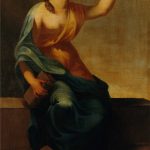
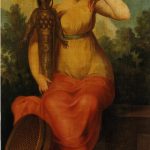
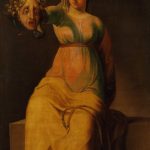
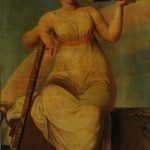
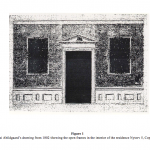

Comments are closed.